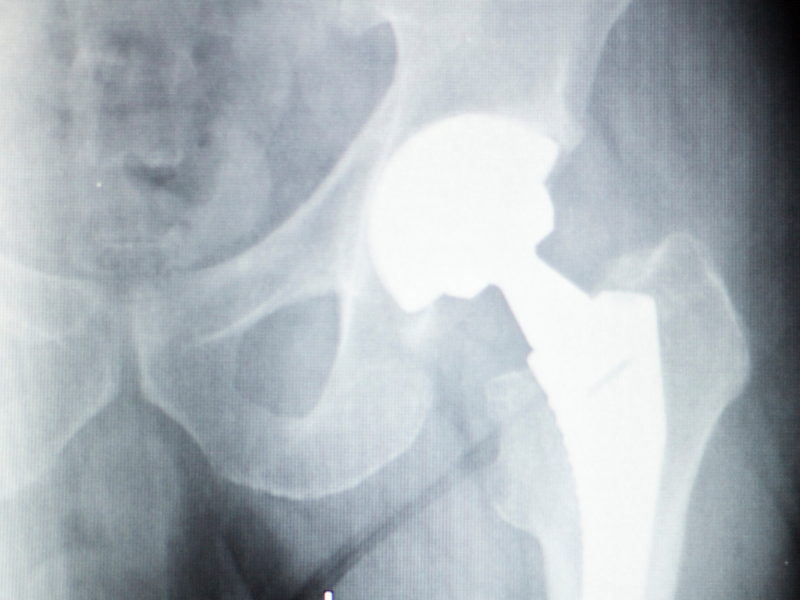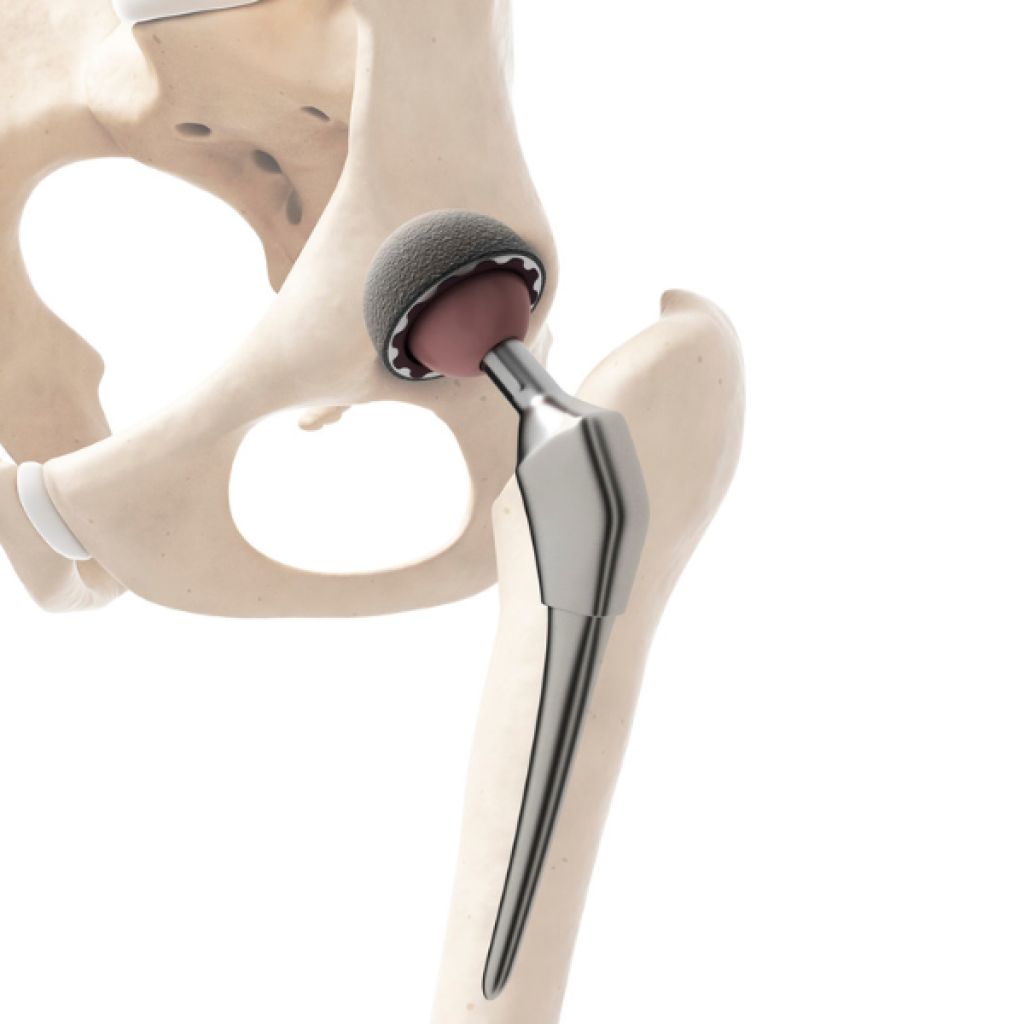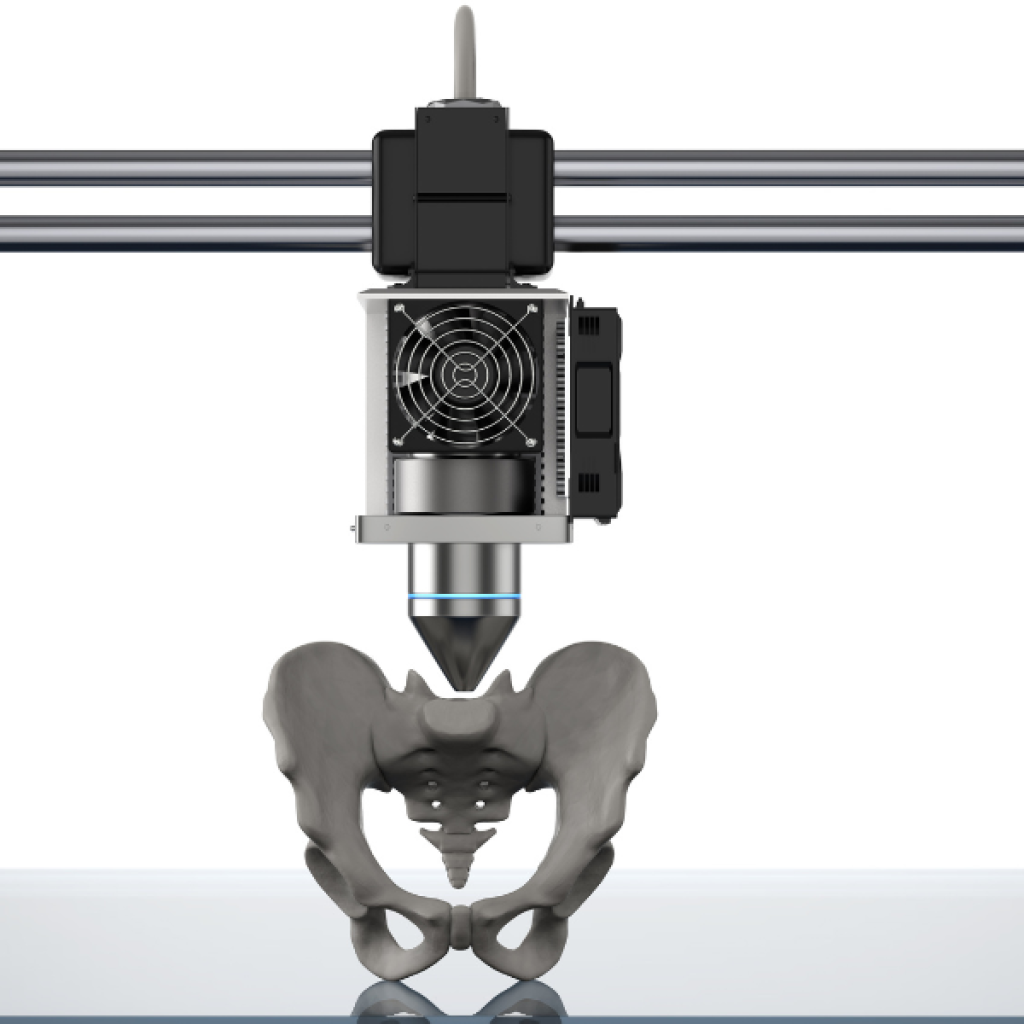As Shakira famously sang “Hips Don’t Lie”. Especially when hip pain starts to interfere with daily life and doing anything remotely resembling belly dance moves feels like a thing of the past.

The hip joint is a vital connection point between the legs and the torso. It’s comprised of the thigh bone (femur) and the hip bone (pelvis). It’s a ball-and-socket joint that enables a wide range of motion; flexion, extension, abduction, adduction, external rotation, internal rotation and circumduction.
While most of those terms may not be familiar to you, all the movements they describe most assuredly are. And if you have pain associated with one or more of those movements, you may need to consider hip replacement surgery in the future.
Hip Replacement Surgery Causes
Hip replacement surgery is one of the most common surgical procedures performed in Canada. What used to be a lengthy and complex operation has now become a quick and comparatively safe surgery that has changed the lives of people who would previously have been relegated to a wheelchair.
Certain conditions and fractures are known to damage the hip joint, which may make hip replacement the best option. These include:
- Osteoarthritis. Generally caused by wear and tear, osteoarthritis damages the slick cartilage that covers the ends of bones and helps joints move smoothly.
- Rheumatoid arthritis. An auto-immune disorder, rheumatoid arthritis creates inflammation that can erode cartilage and occasionally underlying bone, resulting in damaged and deformed joints.
- Osteonecrosis. If there isn’t enough blood supplied to the ball portion of the hip joint, such as might result from a dislocation or fracture, the bone might collapse and deform.
- Trauma and Fractures. A hip fracture will often require surgery. In some cases, a surgeon may recommend a hip replacement if the trauma or fracture damages the blood supply to the hip joint.
Most hip replacements last about 10 to 15 years. Depending on numerous factors, it can last much longer. Surgery to an existing implant is called revision surgery. It’s technically more difficult, recovery can take longer, and success rates may be lower than first operations.
When to Consider Getting a Hip Replacement
If left untreated, damage to the hip joint generally worsens over time, making the surgery more difficult and increasing the risk of complications. Withstanding the pain can lead to sleep loss and decreased mobility and physical fitness. This can lead to weight gain and other health issues for the heart, lungs, and other organs.
Additionally, delaying surgery can weaken the muscles around the hip joint, making rehabilitation more difficult and potentially preventing you from regaining full strength. If you have the following symptoms, it would be wise to consult with your doctor to see if partial or total hip replacement surgery is right for you.
- Hip and/or groin pain that persists, despite appropriate pain medication
- Pain that worsens with walking or exercise, even with a cane or walker
- Pain that interferes with sleep
- Limited range of motion and stiffness, making it hard to move or bend the hip joint or rise from a seated position
Partial vs. Full Hip Replacement
In a total hip replacement (also called total hip arthroplasty), both the ball and socket of the hip joint are replaced.

This involves removing the damaged head of the femur (thigh bone) and replacing it with a metal or ceramic ball attached to a stem. The damaged hip socket is also replaced with a synthetic one, which may be made of plastic, ceramic, or metal. Total hip replacements are commonly used for severe arthritis or injuries where both components of the joint are damaged.
In a partial hip replacement (also called hemiarthroplasty), only the ball of the joint is replaced, while the socket is left intact.
Partial replacements are more commonly performed in cases of hip fractures, particularly in older adults, when only the femoral head is damaged or deteriorated. This procedure is generally quicker and has a shorter recovery period than a total hip replacement but is limited to specific cases.
Watch the video below to learn in-depth about hip replacement surgery.
New Technologies and Treatments
Minimally Invasive Surgery (MIS): Minimally invasive hip replacement surgery has advanced with several new techniques focused on reducing trauma, minimizing recovery time, and improving outcomes. Notable methods include the Direct Anterior Approach (DAA) and the Efficient Direct Anterior (EDA) technique.
- Direct Anterior Approach (DAA): This technique involves accessing the hip joint from the front, which avoids major muscle cuts. Surgeons use specialized tables and instruments to manipulate the limb without detaching muscles, leading to quicker recovery and reduced pain.
- Efficient Direct Anterior (EDA) Technique: The EDA technique simplifies the DAA by removing the need for specialized equipment and X-ray machines. By using a standard operating table and fewer instruments, this method minimizes muscle trauma and allows patients to recover faster. The EDA procedure, developed recently, has shown promising results in both efficiency and lower complication rates.
- Robotic Assistance: Robotic systems like the Mako robot are now being integrated with these approaches to enhance precision. These systems use 3D imaging and CT scans to allow exact alignment of the implant with minimal adjustments during surgery. Precision helps reduce post-surgery complications, aiding in smoother and shorter recovery times.
3D-Printed Implants

3D printing is transforming custom-fitted implants for hip replacements by enabling highly personalized and precise solutions.
This fantastic use of technology helps ensure a better fit, reduces the risk of complications and postoperative pain, and enhances mobility and comfort. Personalized implants may also have a longer lifespan; all these benefits may mean fewer revision surgeries down the road.
Alternative Therapies
Stem cell therapy, Prolotherapy and platelet-rich plasma (PRP) injections are emerging treatments that aim to delay or avoid surgery by promoting natural healing.
Cost of Hip Replacement
In most cases, hip replacement surgery is covered by Canada’s public healthcare system. The process begins with a referral from a family doctor to an orthopedic surgeon after an initial assessment.

Waiting times for surgery once the assessment has been made can be about 6 months or much more depending on where you reside and other factors such as your age. Supplementary costs like physiotherapy may not be covered.
If you would like faster treatment you can consult with a private clinic, however you will have to travel to a clinic outside of your province. Private clinics aren’t allowed to charge patients in the province they operate for a hip replacement, but they can charge out of province or international clients.
The cost for total hip replacement in a private clinic in Canada is anywhere from $20,000 to $30,000 per hip. Make sure to factor in travel, lodgings and food while away from home. Private insurance may cover some of the surgery and associated costs. Check with your provider before firming up plans.
Medical tourism is also an option that some Canadians are willing to take. Countries like Mexico, Thailand, Germany and Lithuania are offering hip replacements often at a fraction of the cost we pay in Canada. If you do decide to travel abroad for this surgery, make sure you check clinic accreditation, read all the reviews you can, and ask yourself how comfortable you truly are being so far away from home for major surgery.
Finding the Best Hip Replacement Doctor in Canada
When looking for the best surgeon or private clinic, consult multiple doctors and/or clinics, research credentials and check out ratings and reviews along with any professional affiliations.
Here are some of the top private clinics in Canada for hip replacement surgeries:
Click for a list of some of the top private clinics in Canada for hip replacement surgeries.
Clearpoint Surgical (National)
Surgical Solutions Network (National)
Timely Medical Alternatives (National)
Canadian Surgery Solutions (Calgary, AB)
Edmonton Bone and Joint Centre
Canadian Private Surgical Clinic(Montreal, QC)
Canadian Private Surgical Clinic (Montreal)
Duval Orthopaedic Clinic (Laval)
Shouldice Hospital (Toronto, ON)
Bluewater Surgery Centre (Sarnia, ON)
Vancouver Hip & Knee Replacement Institute (Vancouver, BC)
For those interested in potentially going private, booking a consultation will provide further insight into wait times, costs, and services.
Hip replacement surgery in Canada is a generally safe and effective treatment for severe hip problems. It offers improved quality of life for patients, but potential candidates should carefully weigh symptoms, costs, and the choice of a skilled surgeon to ensure the best outcomes.
~Read more from The Health Insider~
- Leftovers Safety: Store & Reheat Like a ProLearn how to store and reheat holiday leftovers safely. From the “Two-Hour Rule” to freezing tips, keep your Canadian kitchen healthy this season.
- Canadian Innovation in Brain Imaging: A Tiny Camera Making Big Strides in NeurosurgeryMeet the Vena MicroAngioscope: a world-first Canadian innovation giving neurosurgeons real-time, full-colour views from inside the brain’s blood vessels.
- Early Peanut Introduction Cuts Childhood Allergy Risk by Nearly HalfNew 2025 data show introducing peanuts in infancy significantly lowers peanut allergy rates, confirming earlier clinical trial findings in real-world settings.
- Do This Simple At-Home Mushroom Trick To Boost Your Vitamin DTanning your mushrooms can add over 1,000 IU of vitamin D in just 30 minutes. That’s the same as most supplements deliver in one pill.
- From Your Bedroom to The Lab: The New Face of STI Testing in CanadaFrom Ontario to B.C., STI testing options vary. Some Canadians can now access at-home kits that make checking their sexual health easier than ever.
- When ‘What If?’ Won’t Quit: Coping With Health AnxietyFrom freckles to faint aches, health anxiety can turn normal body changes into sleepless nights—especially in Canada’s strained system.
The information provided on TheHealthInsider.ca is for educational purposes only and does not substitute for professional medical advice. TheHealthInsider.ca advises consulting a medical professional or healthcare provider when seeking medical advice, diagnoses, or treatment. To read about our editorial review process click here.







